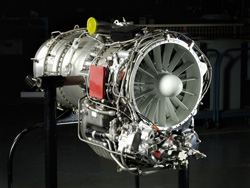Virtual reality from product inception to supply
The EU-funded ‘Value improvement through a virtual aeronautical collaborative enterprise’ (Vivace) project set out to develop a comprehensive virtual design platform that enables collaboration between teams in an extended enterprise, taking a virtual product with all desired characteristics from the product design phase all the way through to the supply chain. The project was divided into three different technical areas under the leadership of three industrial partners specialised in aircraft products, engine products and integration or advanced capabilities. The result was the Vivace toolbox, highlighting the fact that it is a stand-alone re-usable platform. The virtual aircraft software included system and flight simulations in addition to component simulations throughout the development life-cycle. The virtual engine module included life-cycle modelling and supply chain workflow simulation in addition to whole engine development. Finally, the advanced capabilities software developed common tools, methodologies and guidelines shared by the aforementioned areas. The researchers identified generic services, where services were defined as aeronautical information technology (IT) capabilities and generic refers to the fact that Vivace generic services can be implemented on several IT architectures using different commercial tools. They used an eight-layer model integrating business issues, the Vivace virtual simulation platform and implementation issues to consider the link between the Vivace system and business needs. Furthermore, they demonstrated the toolbox capabilities through several use case scenarios. In summary, the Vivace project produced an innovative aeronautical collaborative design environment validated through real industrial use cases that will advance aircraft and engine design. Implementation of the toolbox should lead to significant reductions in aircraft development costs, time associated with the development phase of new aircraft designs, and lead time and development costs of gas turbine engines. Thus, the virtual product foundation and virtual enterprise foundation should have significant impact on international standards, increase EU competitiveness in the aeronautics manufacturing industry and provide a boost to the European economy.







